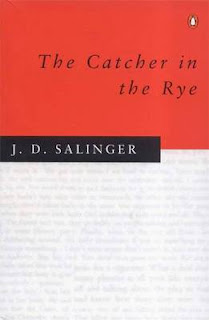Coalition maths
According to Andrew Rawnsley, a hung parliament is quite a plausible outcome of the 2015 election. But how likely is it really compared to the 2010 election?
In 2010, a number of factors made a hung parliament a very likely outcome. The Conservatives were in the ascendant, but due to the geographical spread of their voters they required a larger poll lead than Labour in order to secure a majority. Using the Electoral Calculus model we can estimate the leads Labour and the Conservatives would have required to get a majority:
In the end, the Conservative lead was seven points and so they had to go into coalition with the Lib Dems. The Tories have since attempted to manipulate the electoral boundaries to benefit themselves, but the Lib Dems have said they will block the manoeuvre in revenge for the failure of House of Lords reform. So we will be in much the same position in 2015.
There is an assumption in the table above though that we have not yet considered: the Lib Dem share of the vote. One of the other reasons a hung parliament was so likely last time round was because the Lib Dems polled around 24%. At the moment, though, they are far less popular, with the likes of YouGov regularly putting them in single figures.
Let's be generous and assume that the Lib Dems will not do quite that badly - what does the table look like if the Lib Dems poll, say, 12%? (assuming the rest of their vote goes to either Labour of Conservative)
Clearly a hung parliament is much less likely under these circumstances, even before taking into consideration Labour's current 10 point lead over the Tories.
This point may seem obvious but I suspect that many political pundits haven't figured it out yet.
In 2010, a number of factors made a hung parliament a very likely outcome. The Conservatives were in the ascendant, but due to the geographical spread of their voters they required a larger poll lead than Labour in order to secure a majority. Using the Electoral Calculus model we can estimate the leads Labour and the Conservatives would have required to get a majority:
| Labour | Conservative | Conservative lead | Outcome |
|---|---|---|---|
| 28 | 39 | +11 | Con majority 6 |
| 29 | 38 | +9 | Hung - Con short 11 |
| 30 | 37 | +7 | Hung - Con short 23 |
| 31 | 36 | +5 | Hung - Con short 40 |
| 32 | 35 | +3 | Hung - Lab short 37 |
| 33 | 34 | +1 | Hung - Lab short 24 |
| 34 | 33 | -1 | Hung - Lab short 15 |
| 35 | 32 | -3 | Lab majority 6 |
In the end, the Conservative lead was seven points and so they had to go into coalition with the Lib Dems. The Tories have since attempted to manipulate the electoral boundaries to benefit themselves, but the Lib Dems have said they will block the manoeuvre in revenge for the failure of House of Lords reform. So we will be in much the same position in 2015.
There is an assumption in the table above though that we have not yet considered: the Lib Dem share of the vote. One of the other reasons a hung parliament was so likely last time round was because the Lib Dems polled around 24%. At the moment, though, they are far less popular, with the likes of YouGov regularly putting them in single figures.
Let's be generous and assume that the Lib Dems will not do quite that badly - what does the table look like if the Lib Dems poll, say, 12%? (assuming the rest of their vote goes to either Labour of Conservative)
| Labour | Conservative | Conservative lead | Outcome |
|---|---|---|---|
| 36 | 43 | +7 | Con majority 22 |
| 37 | 42 | +5 | Hung - Con short 6 |
| 38 | 41 | +3 | Hung - Con short 17 |
| 39 | 40 | +1 | Hung - Lab short 10 |
| 40 | 39 | -1 | Lab majority 6 |
Clearly a hung parliament is much less likely under these circumstances, even before taking into consideration Labour's current 10 point lead over the Tories.
This point may seem obvious but I suspect that many political pundits haven't figured it out yet.



We're getting dangerously close to that candidate in the West Wing who was within the margins of error of having any support at all.
ReplyDelete